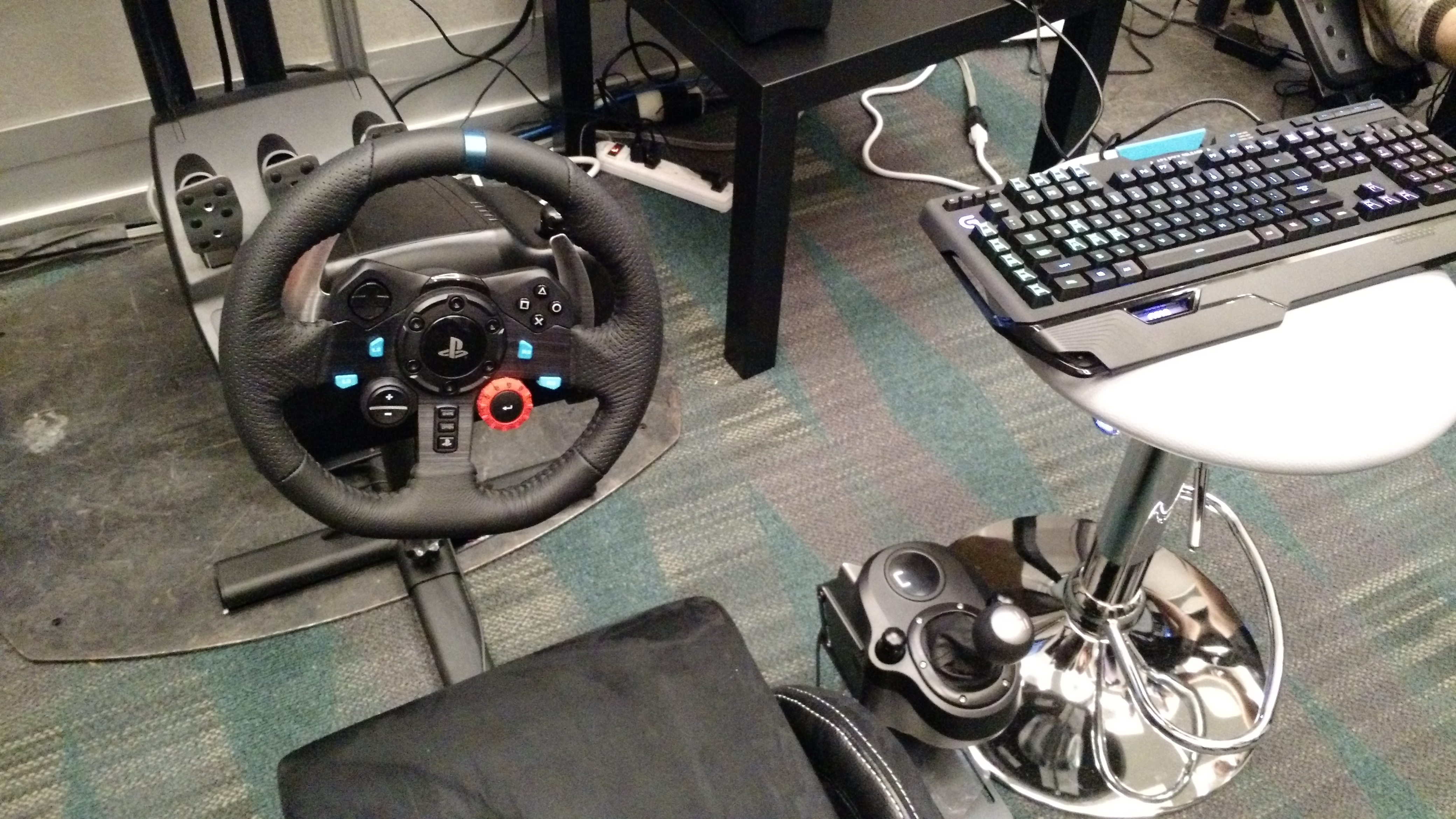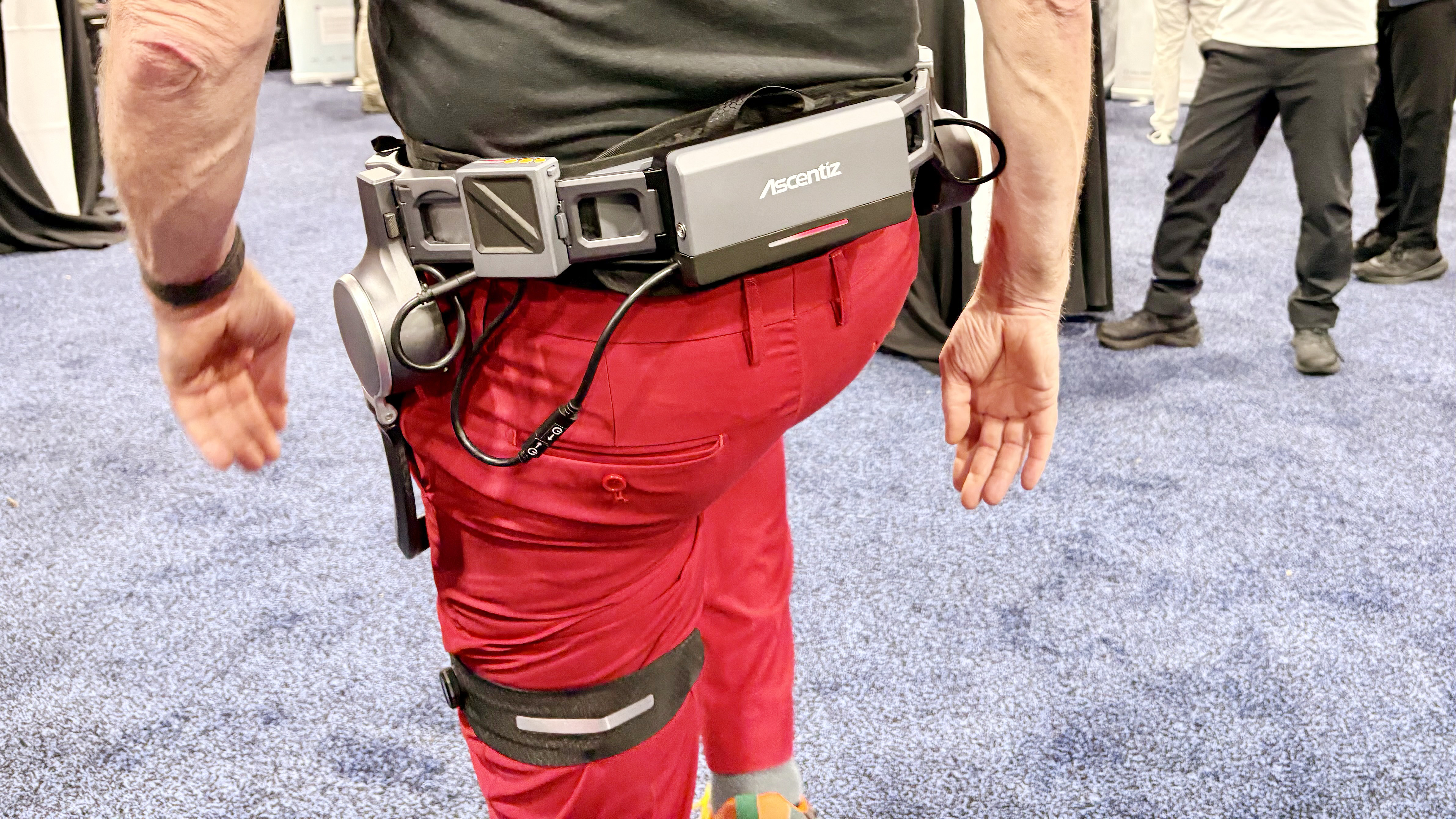Logitech Steering Wheels Enhance Console Racing
The new Logitech G29 and G920 racing wheels provide force feedback and realistic controls for the PS4 and Xbox One, respectively.

LOS ANGELES – Controllers, mice and keyboards may suit casual racing fans, but for hardcore digital gearheads, nothing gets the motor oil pumping like a great racing-wheel peripheral. Logitech is no stranger to racing wheels, and now console gamers can enjoy the same kind of accessory as their PC brethren. The new Logitech G29 and G920 wheels provide force feedback and realistic controls for the PS4 and Xbox One, respectively.
Logitech first announced the wheels last week, and I had a chance to go hands-on (and feet-on, as it turns out) with the G29 at E3 2015. The two wheels are nearly identical in both design and appearance, save for the fact that the PS4-centric G29 has an additional knob that will provide special features for the Sony-exclusive Gran Turismo series.
MORE: Best of E3 Awards: The Games to Watch
The G29 and G920 are each two-part systems. The main attraction is the wheel itself, made of anodized metal and covered in a leather grip. The inside of the wheel has the full suite of buttons for whichever console it represents, as well as paddle shifters to change gears on either side. Unless you own a very fancy car, there's a good chance that the G29 and G920 will feel more comfortable than your actual steering wheel.
A car isn't worth much without pedals, of course, which is where the pedal unit comes in. Like a regular car, the unit contains three pedals: one for gas, one for brakes and one for the clutch. Between the wheel and the pedals, driving in-game felt to me a lot like driving in real life – assuming, of course, that I drove a racecar on a regular basis.
I tried out the G29 with Project Cars, a realistic cross-platform racing game. For the demo, Logitech also provided its optional Driving Force Shifter (a $60 add-on, currently available for pre-order), which is a manual-gear-shifter peripheral. I played on an assisted manual setting, meaning that I did not have to mess around with the clutch, but still had to shift gears manually.
I quickly learned three things. First, I am not very good at racing games. Second, I don't remember how to drive a manual-transmission car nearly as well as I thought I did. Third, the G29 setup nevertheless felt very good. The wheel responded with appropriate resistance every time I made a turn or brought it back to a neutral position. The faster I traveled and the steeper the angle of the turn, the more the wheel would resist, and the faster it would spin back.
Get instant access to breaking news, the hottest reviews, great deals and helpful tips.
The pedals felt similarly realistic. The brake pedal was not just a simple lever; it responded with more or less resistance depending on how fast I was traveling and how much pressure I applied to it. My only complaint was with the Driving Force Shifter. As it does not have numbers on it, I ended up sticking to the paddle shifter on the wheel most of the time. This criticism will, of course, seem petty to anyone who has driven a manual transmission sometime in the last five years.
Given my lack of expertise with both the genre and similar peripherals, I can't say for certain how the G29 and G920 stack up to the competition. However, I had an immersive experience with them, and could see them acting as a solid complement to racing fans who play on consoles rather than PCs. (Both wheels are compatible with PCs, though, for those who play on both.) The devices retail for $400 apiece, and should start shipping in July.
- Best Gaming Desktops
- Most Anticipated Games of the Year
- PS4 vs. Xbox One: Which Console Is Right for You?
Marshall Honorof is a senior writer for Tom's Guide. Contact him at mhonorof@tomsguide.com. Follow him @marshallhonorof. Follow us @tomsguide, on Facebook and on Google+.

Marshall Honorof was a senior editor for Tom's Guide, overseeing the site's coverage of gaming hardware and software. He comes from a science writing background, having studied paleomammalogy, biological anthropology, and the history of science and technology. After hours, you can find him practicing taekwondo or doing deep dives on classic sci-fi.
